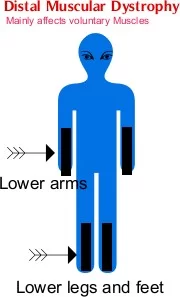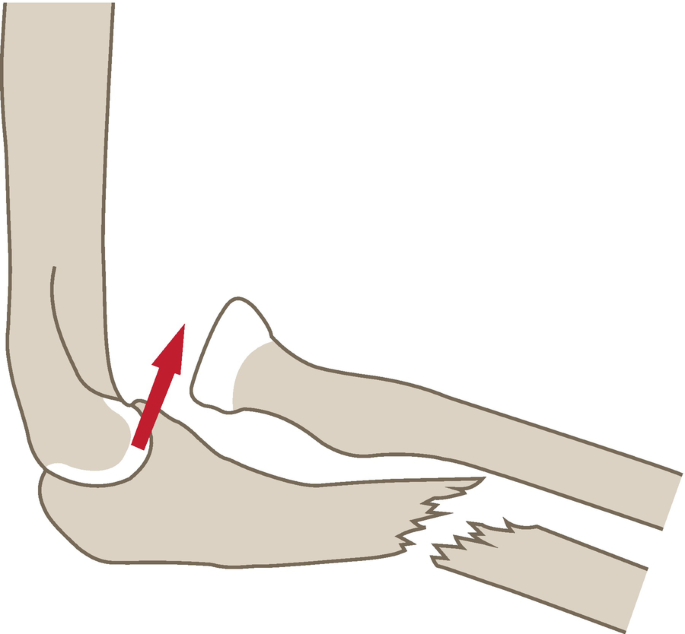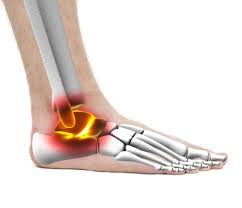Niacin Deficiency (Vitamin B3 Deficiency)
What is Niacin Deficiency?
A niacin deficiency, known as pellagra, can have significant health implications. Pellagra was historically prevalent in populations relying heavily on corn-based diets, as corn contains niacin in a bound form that is not readily absorbed by the body.
Niacin, also known as Vitamin B3, is a crucial water-soluble vitamin essential for various physiological functions in the human body. It plays a fundamental role in energy metabolism, DNA repair, and the synthesis of various molecules, including neurotransmitters.
Inflammatory skin, diarrhea, dementia, and oral sores are among the symptoms. Usually, the first areas of skin to be damaged are those that are exposed to friction or sunlight.
The affected skin may darken, harden, flake, or bleed over time. Primary and secondary pellagra are the two main varieties.
An inadequate niacin and tryptophan diet is the cause of primary pellagra. Poor dietary niacin use is the cause of secondary pellagra. Alcoholism, chronic diarrhea, carcinoid syndrome, Hartnup disease, and several drugs, including isoniazid, can all cause this.
Symptoms are usually used to make the diagnosis, which may be supported by urine tests. Supplementing with nicotinamide or niacin is the treatment option.
Usually, improvements start to show themselves after a few days. It is also usually advised to make general dietary modifications. Using sunscreen and wearing appropriate clothes to reduce sun exposure is crucial as the skin recovers.
Death can happen if therapy is not received. The condition is especially prevalent in underdeveloped nations, particularly in sub-Saharan Africa, where it frequently manifests as a malnutrition-related illness of extreme poverty.
Signs and Symptoms (Niacin B3) Deficiency
“The four Ds”—diarrhea, dermatitis, dementia, and death—are the typical signs of pellagra. A longer, more detailed list of symptoms consists of:
- Sensitivity to sunlight
- Dermatitis (sometimes referred to as casal collar, a distinctive “broad collar” rash)
- Hair loss
- Swelling
- Smooth, beefy red glossitis (tongue inflammation)
- Trouble sleeping
- Weakness
- Mental confusion or aggression
- Ataxia (lack of coordination)
- paralysis of extremities
- peripheral neuritis (nerve damage)
- Diarrhea
- Dilated cardiomyopathy (enlarged, weakened heart)
- Eventually dementia
According to Cleary and Cleary, J. Frostigs and Tom Spies defined more particular psychological symptoms of pellagra as follows:
- Psychosensory abnormalities (pain perception, strong light annoyance, sensitivity to certain scents resulting in nausea and vomiting, lightheadedness following abrupt movements).
- Psychomotor disturbances, which include restlessness, tenseness a desire to argue, and an enhanced readiness to move when necessary, along with.
- Disturbances in emotions.
Blood levels of tryptophan or urine metabolites, such as the ratio of NAD/NADP in red blood cells or the 2-pyridone/N-methyl niacinamide ratio <2, can be used to identify pellagra even in the absence of clinical symptoms. Fast symptom relief with niacin dosages (250–500 mg/day) or niacin-enriched foods confirms the diagnosis.
Pathophysiology (Niacin B3) Deficiency
Pellagra can occur through a number of pathways. Traditionally, it has been linked to a reduction in nicotinamide adenine dinucleotide (NAD) due to niacin (vitamin B3) insufficiency.
Pellagra has a wide range of clinical effects and can be fatal if left untreated, this is because NAD and its phosphorylated NADP form are cofactors needed for several bodily functions. The first mechanism is a simple deficiency of niacin in the diet.
Secondly, it might be caused by a tryptophan deficit. Tryptophan is an amino acid that is necessary for the body to produce niacin and can be found in meat, chicken, fish, eggs, and peanuts.
Third, too much leucine may be the culprit since it inhibits the enzyme quinolinate phosphoribosyl transferase (QPRT) and prevents niacin or nicotinic acid from converting to nicotinamide mononucleotide (NMN).
which results in symptoms similar to pellagra. Pellagra can result from certain circumstances that hinder the body’s ability to absorb tryptophan or niacin from food.
Inflammation of the ileum or jejunum can impede the absorption of nutrients, resulting in pellagra, which can be a consequence of Crohn’s disease.
Pelagra can also result from a gastroenterostomy. In addition to impairing absorption, chronic drinking can also result in low tryptophan and niacin levels in the diet, which can lead to pellagra. Pelligragra is caused by a genetic abnormality called Hartnup disease, which decreases the absorption of tryptophan.
Symptoms resembling pellagra may also result from changes in protein metabolism. One instance is carcinoid syndrome, a condition where tryptophan is used as a source of serotonin production by neuroendocrine tumors throughout the GI system.
This reduces the amount of tryptophan that is available for the synthesis of niacin. Just 1% of dietary tryptophan in healthy individuals is converted to serotonin; in carcinoid disease patients, this percentage can reach 70%.
Thus, pellagra-like clinical symptoms and a niacin shortage may result from carcinoid illness. Anti-tuberculosis drugs often bind to vitamin B6 and pyridoxine, and inhibit the production of niacin since B6 is a necessary cofactor in the tryptophan-to-niacin conversion.
Pelagra can be induced by a number of medicinal medications. These include the anti-cancer drug fluorouracil.
The immunosuppressive drug mercaptopurine, and the antibiotics isoniazid and chloramphenicol, both reduce accessible B6 by binding to it and rendering it inactive, preventing it from being utilized in the manufacture of niacin.
Treatment (Niacin B3) Deficiency
Pelagra can be fatal in four or five years if left untreated. Nicotinamide, a vitamin having a similar chemical structure to niacin and the same vitamin function, is used as a treatment. However, nicotinamide is less hazardous. The degree of progression of the illness determines how often and how much nicotinamide is provided.
Epidemiology (Niacin B3) Deficiency
People who get the majority of their energy from corn, such as those living in rural South America where maize is a main meal, are more likely to get pellagra. Maize is a poor source of both niacin and tryptophan if it is not nixtamalized.
Nixtamalization is a prevalent process in Native American societies that cultivate maize, particularly in Mexico and the Central American countries.
It corrects niacin deficiencies. In the corn cycle, the symptoms often start in the spring, get worse in the summer from more sun exposure, and then go away in the fall. Subsequently to spring. In fact, pellagra used to be widespread in the poorer southern states of the United States, like Mississippi and Alabama.
It was known as “spring sickness” in these areas due to its cyclical springtime appearance following meat-heavy winter diets, especially when it affected more vulnerable children.
It was also commonly found among inmates of jails and orphanages, according to research in China, Indonesia, and Africa, pellagra is widespread.
Most individuals with clinical pellagra in wealthy nations are food intolerant, destitute, homeless, or suffer from alcoholism. Pellagra was prevalent among convicts held in the Gulags, the Soviet work camps.
Furthermore, because of their particular, long-term living conditions and reliance on food assistance, communities of refugees and other displaced individuals are typically affected by pellagra, a micronutrient deficiency illness.
Refugees usually depend on the few amounts of niacin that are given to them; these are frequently peanuts, which in Africa may be given in lieu of the native groundnut staples.
There have been incidences documented in other nations, such as the Netherlands and Denmark, even with adequate niacin consumption.
In this instance, deficiencies may result from drunkenness, medication interactions (psychotropic, cytostatic, tuberculostatic, or analgesics), HIV, vitamin B2, and B6 insufficiency, or malabsorption disorders such as Hartnup disease and carcinoid tumors.
Deficiencies may also occur as a result of poverty or malnourishment. the Bambara or Hausa groundnut); pellagra in displaced communities may be brought on by fluctuations in the nutritional value and distribution of food assistance.
There were epidemics in the 2000s in nations including Zimbabwe, Nepal, and Angola. Particularly in Angola, new findings indicate.
A comparable prevalence of pellagra since 2002, with clinical pellagra affecting 0.3% of women and 0.2% of children and niacin deficiency linked to high untreated maize intake affecting 29.4% of women and 6% of children.
Etymology
Although its precise roots are unknown, the term “pellagra” is thought to have originated in Lombard. “Skin” or “pellis” in classical Latin is undoubtedly where the word “pell” originates. “-agra” can originate from two sources: the Latinate “-agra,” a suffix for diseases themselves that is derived from the Greek “ἄγρα,” which means “a catch-point, a hunting trap,” or the Lombard “agra,” which means “like serum or holly juice.”
History (Niacin B3) Deficiency
Corn, or maize, was initially domesticated by Native American farmers by a process called nixtamalization, in which the grain is treated with an alkali solution, such as lime. Nixtamalization avoids pellagra and increases the nutritional availability of niacin.
Pellagra spread when maize was grown all over the world and consumed as a staple food without being processed.
Gaspar Casal initially wrote about pellagra’s dermatological benefits in Spain in 1735. He clarified that poor food and environmental factors are the disease’s origins and that it produces dermatitis in exposed skin regions including the hands, feet, and neck.
Historia Natural y Medicina del Principado de Asturias, or Natural and Medical History of the Principality of Asturias, was the title of his work that his friend Juan Sevillano published in 1762.
The illness became known as “Asturian leprosy” as a result, and this is acknowledged as the earliest pathological description of a condition in contemporary times.
It was an endemic illness in northern Italy, where Francesco Frapolli of Milan gave it the name Lombard. Pellagra affects more than 100,000 people. By the 1880s, there were heated discussions among Italians over the disease’s classification (as a distinct disease, elephantiasis, or a variation of scurvy) and its cause.
Although Roussel’s drive to ban maize intake in France throughout the 1800s succeeded in eliminating the disease, it persisted as an endemic in many of Europe’s rural areas.
The most persuasive theory in the late 19th century, put forth by Cesare Lombroso, was that the predominant food crop in the areas where pellagra epidemics happened was maize. This meant that the corn might either carry a poisonous material or be a disease carrier.
At the London School of Tropical Medicine, Anglo-Italian physician Louis Sambon was certain that pellagra was conveyed by an insect, similar to the malaria virus.
Subsequently, researchers looked at processing methods in Mesoamerica, where maize is a significant food crop, due to the absence of pellagra epidemics in that area.
Up until the late 19th century, when it started to spread, particularly in the southern United States, pellagra was mostly researched in Europe. In the American South, pellagra pandemic proportions were achieved in the early 1900s.
Over 3 million Americans contracted pellagra between 1906 and 1940, resulting in over 100,000 fatalities; nevertheless, the pandemic ended immediately following dietary niacin fortification. In the first ten months of 1915, there were 1,306 pellagra fatalities in South Carolina; in 1916, the disease afflicted 100,000 people in the region.
During this period, the scientific community believed that a corn toxin or a germ was most likely the cause of pellagra.
Located near Spartanburg, South Carolina, the Spartanburg Pellagra Hospital was the first establishment in the country devoted to Pellagra’s cause. It was founded in 1914, largely for research, with a special Congressional appropriation to the U.S. Public Health Service (PHS).
Dr. Joseph Goldberger, who was tasked by the US Surgeon General to investigate pellagra in 1915, demonstrated the connection between pellagra and nutrition by witnessing epidemics of the disease in mental health facilities and orphanages.
Goldberger observed that patients in mental hospitals (but not physicians or nurses) and children between the ages of 6 and 12 (but not older or younger children at the orphanages) appeared to be the most vulnerable to pellagra.
According to Goldberger’s theory, a diet low in meat, milk, eggs, and legumes rendered those specific groups pellagra-prone.
Through the implementation of a diet that included “a marked increase in the fresh animal and the leguminous protein foods,” Goldberger was able to demonstrate the prevention of pellagra.
By 1926, Goldberger had proven that pellagra could be avoided with a diet rich in these foods or a tiny quantity of brewer’s yeast. Eleven inmates were used in Goldberger’s experiments (one was released because of prostatitis).
Prior to the experiment, the convicts at Mississippi’s Rankin jail Farm were consuming the same jail food as other prisoners.
A limited diet consisting of grits, syrup, mush, biscuits, rice, collards, cabbage, sweet potatoes, and coffee with sugar (no milk) was introduced by Goldberger.
Because Caucasians were thought to be the least vulnerable to the disease and to have more easily visible skin lesions, healthy white male volunteers were chosen.
This provided the greatest proof that the sickness was caused by a nutritional deficit. The subjects’ gastrointestinal and cognitive effects were moderate but usual after five months of this cereal-based diet.
Six out of the eleven participants developed the skin lesions required for a conclusive pellagra diagnosis. The scrotum was where the lesions initially showed up.
The convicts were freed soon after the pellagra diagnosis was made, thus Goldberger was not able to try to cure the consequences of diet-induced pellagra.
In the 1920s, he made the connection between pellagra and rural communities’ corn-based diets, as opposed to infection, as recommended by modern medicine.
Goldberger thought that poverty-induced dietary restrictions were the primary cause of pellagra in Southern farmers and that social and land reform would effectively stop the pandemic of pellagra.
Although his reform initiatives were not successful, agricultural diversification in the. The danger of pellagra was significantly decreased by the change in nutrition that followed in the Southern United States.
The “unsung hero of American clinical epidemiology” is how Goldberger is known. Even while he recognized that pellagra was caused by a nutritional deficiency, he was unable to identify the precise vitamin in question.
Professor of biochemistry at the University of Wisconsin-Madison Conrad Elvehjem demonstrated in 1937 that niacin, a vitamin, could treat pellagra in dogs, which exhibited a black tongue.
Time Magazine named Dr. Tom Spies, Marion Blankenhorn, and Clark Cooper their 1938 Men of the Year in Comprehensive Science when their later research showed that niacin also treated pellagra in people.
Studies carried out between 1900 and 1950 revealed that the proportion of pellagra cases among women was regularly double that of males. It is believed that this is caused by estrogen’s inhibition of tryptophan’s conversion to niacin.
Regarding the discrepancy, a few researchers at the time provided several reasons. Gillman and Gillman studied the relationship between pellagra and skeletal tissue in South Africans.
They offer some of the strongest proof regarding pellagra’s skeletal symptoms and the way that starvation affects bone. They asserted that radiographic examinations of adult pellagrins showed pronounced osteoporosis.
The observation of a negative mineral balance in pellagrins suggested the active mobilization and excretion of endogenous mineral compounds, which likely had an effect on bone turnover.
More than half of the individuals with pellagra had extensive dental caries. “Severe gingival retraction, sepsis, exposure of cementum, and loosening of teeth” were the most common symptoms linked to caries.
United States
The earliest American mention of pellagra dates back to 1902, and since then, it has “caused more deaths than any other nutrition-related disease in American history,” peaking as an epidemic in the American South in the early 1900s. Before Joseph Goldberger’s seminal research, the precise
source of the risk factors associated with grain intake and poverty was unknown. One popular argument that emerged from a 2017 National Bureau of Economic Research report examining the connection between cotton output and the rise of sickness is that “local production of niacin-rich cotton had been displaced by widespread cotton production.”
commodities and forced impoverished Southern farmers and mill workers to eat maize that had been milled in the Midwest, which was inexpensive but lacked the niacin needed to avoid pellagra.”
The study supported the notion by showing that reduced pellagra rates were found in locations where farmers had been forced to switch from producing the highly valuable crop cotton to producing food crops, which are less profitable, as a result of random boll weevil infestation of cotton crops.
The entire kernel of dried maize has a thin layer of seed that adds some fiber and a healthy germ. When utilizing ground whole-grain corn, there are two crucial factors to take into account.
1 Since grinding exposes the oil in the germ, whole-grain cornmeal and grits should be refrigerated since they get rancid easily at room temperature.
2 Cooking periods for whole-grain cornmeal and grits must be prolonged, as demonstrated by the following instructions for whole-grain grits.
Grits should be put in a pan with water on top of them. After giving the grits a full minute to settle, tilt the pan, and use a fine tea strainer to skim off and discard the hulls and chaff. If the grits were soaked overnight, cook for 50 minutes; if not, cook for 90 minutes.
The majority of niacin found in fully grown cereal grains is found as niacin, which is niacin combined with hemicellulose to form a complex that is not accessible for nutritional use. This might account for up to 90% of the total niacin content in ripe maize.
This niacin was rendered nutritionally accessible and the risk of developing pellagra was decreased by the nixtamalization process, which involved utilizing the entire dried corn kernel.
Concentrated niacytin is found in the germ and aleurone layers, which are milled away. Corn is ground and degermed in The invention of the Beall degerminator, first patented in 1901 and intended to separate the grit from the germ in maize processing, made cornmeal manufacturing possible.
Nevertheless, the niacin level of the cornmeal is decreased during this determination process. An early researcher on the pellagra issue was Casimir Funk, who contributed to the understanding of thiamin’s function in the genesis of beriberi.
Funk proposed that the pellagra outbreak was caused by a modification in the corn-milling process, but his paper on the topic received no attention.
Due to their repetitive and limited diets, vulnerable populations in institutions like jails and orphanages were particularly susceptible to pellagra.
Pellagra quickly spread to states south of the Potomac and Ohio rivers in epidemic proportions. Starting in 1906, the Pellagra pandemic lasted for over forty years. During the outbreak, pellagra was believed to have caused 3 million illnesses and 100,000 fatalities.
In popular culture
The Southerner, Jean Renoir’s 1945 film version of George Sessions Perry’s 1941 novel Hold Autumn in Your Hand, uses pellagra, or “spring sickness,” as a central plot device to tell the tale of a poor Texas farm family.
FAQ
What is a vitamin B3 deficiency’s primary cause?
Seldom occurs in affluent nations, yet epidemics do occasionally occur in Africa, India, and China, especially among displaced and refugee populations. Deficiency is most typically linked in industrialized nations to gastrointestinal malabsorption, certain drugs (e.g., isoniazid), and persistent alcohol use disorder.
What does vitamin B3 niacin do for the body?
Summary. Your body uses the B vitamin niacin to process food and convert it into energy. It supports the health of your skin, digestive system, and neurological system. Although niacin (vitamin B-3) is frequently included in daily multivitamins, most individuals obtain adequate niacin from their diet.
Which food causes niacin deficiency?
Extremely low consumption of both niacin and tryptophan causes primary niacin deficiency, which is typically seen in regions where maize (Indian corn) accounts for a significant portion of the diet.
How do you treat B3 deficiency?
It may be challenging to determine the origin of moderate vitamin B3 insufficiency since its symptoms might be confused with those of other B vitamin deficiencies (such as B2 and B6) that may coexist. Within 48 hours, nicotinamide (niacinamide) treatment will relieve the majority of the neurological and cutaneous symptoms.
What are 2 symptoms of a deficiency of vitamin B3?
A significant deficit of niacin results in pellagra, a disorder that produces a bright red tongue, constipation/diarrhea, and the development of a dark, occasionally scaly rash on skin regions exposed to sunlight. Depression is another indication of a severe niacin deficit. ache.
Which foods contain niacin?
Turkey, beef, chicken, and fish are excellent providers of niacin. Niacin is present in a variety of legumes, nuts, seeds, and soy products.
Can I take niacin every day?
Indeed, some people are able to take niacin on a regular basis. But not everyone should take niacin. Individuals who suffer from specific medical conditions (such as liver disease and stomach ulcers) shouldn’t take niacin. Additionally, niacin and some medicines interact.






